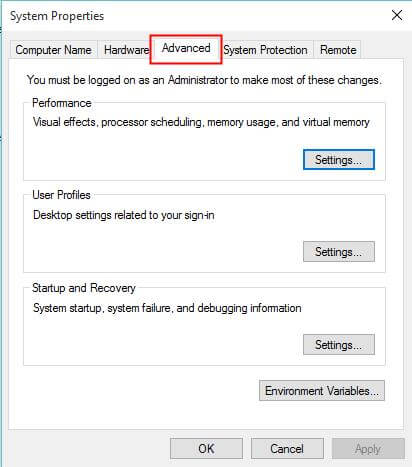DEP (Data Execution Prevention) is a system-level memory protection feature built into the Windows operating system, starting with Windows XP. This DEP feature is also available in Windows 10. These protection features help to prevent damage to your computer from viruses and other security threats. It also helps protect your computer by monitoring programs to make sure they use system memory safely.
In case any program or service executes codes from memory in an inappropriate way, DEP closes the program and protects the PC; that is the beauty of DEP (Data Execution Prevention).
If any program attempts to run code from a protected page, the application receives an exception with the status code. Either you can enable DEP for all the processes and servers or add exceptions for particular programs and services.
How to Enable DEP in Windows 10?
By default, DEP remains ON in Windows 10 for all programs and services. If not, then follow the below procedure to ON it:
1. Click the start button.
2. Right-click on “File Explorer” and select properties.
 3. From the System window, click ‘Advanced system settings.’
3. From the System window, click ‘Advanced system settings.’
 4. Now select the Advanced tab.
4. Now select the Advanced tab.
 5. Under Performance, click the Settings button.
5. Under Performance, click the Settings button.
 6. Finally, select the Data Execution prevention tab from the Performance Options window.
6. Finally, select the Data Execution prevention tab from the Performance Options window.
 Here, you can turn on DEP for Windows programs and services, or also you can add any exceptions if you need.
Here, you can turn on DEP for Windows programs and services, or also you can add any exceptions if you need.



